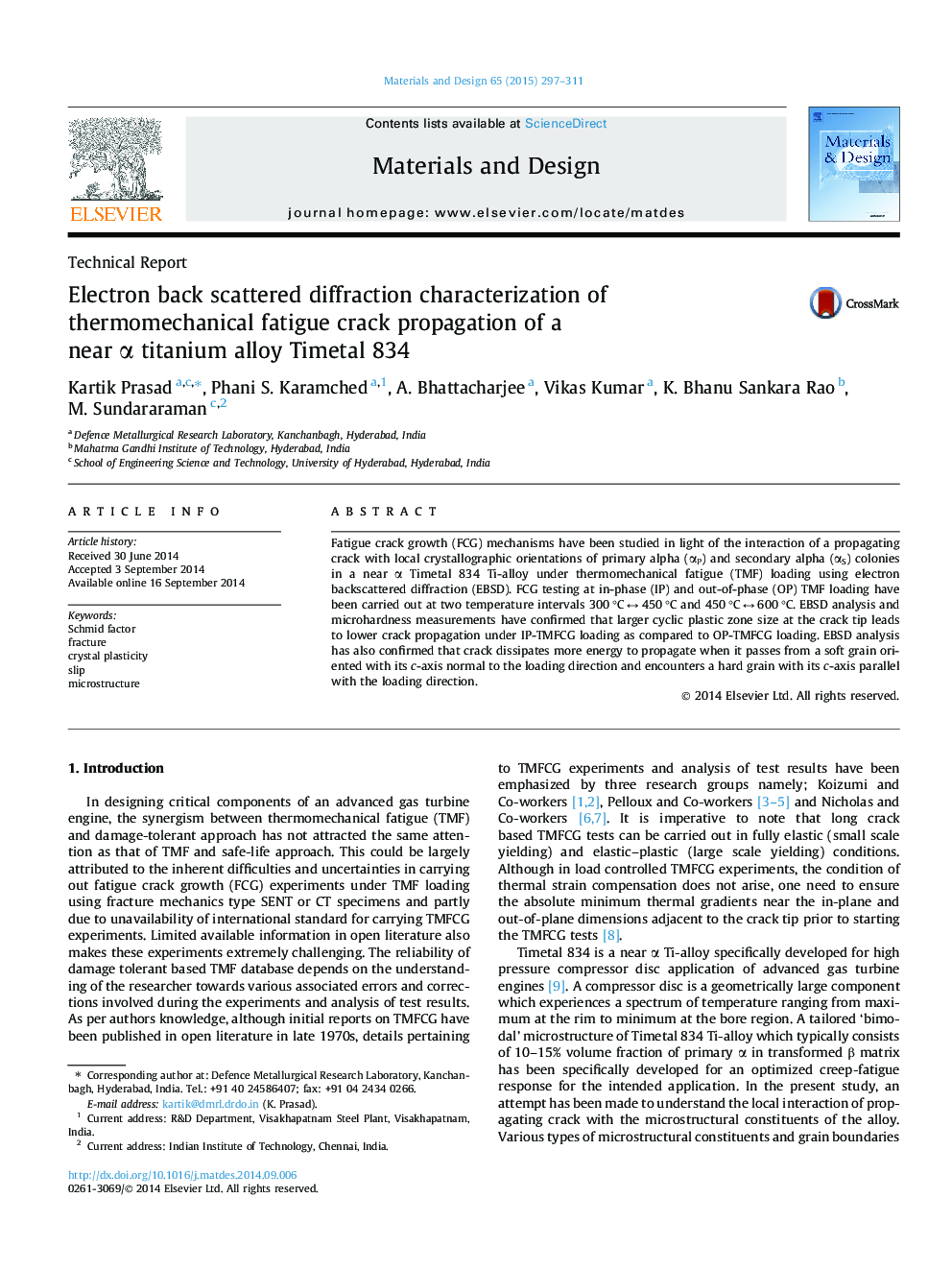| Article ID | Journal | Published Year | Pages | File Type |
|---|---|---|---|---|
| 828809 | Materials & Design (1980-2015) | 2015 | 15 Pages |
•The alloy shows lower crack growth rate under IP-TMFCG loading.•Larger plastic zone size at the crack tip was observed under IP-TMFCG loading.•Primary crack tends to form branches when it enters prismatic slip oriented grain.
Fatigue crack growth (FCG) mechanisms have been studied in light of the interaction of a propagating crack with local crystallographic orientations of primary alpha (αP) and secondary alpha (αS) colonies in a near α Timetal 834 Ti-alloy under thermomechanical fatigue (TMF) loading using electron backscattered diffraction (EBSD). FCG testing at in-phase (IP) and out-of-phase (OP) TMF loading have been carried out at two temperature intervals 300 °C ↔ 450 °C and 450 °C ↔ 600 °C. EBSD analysis and microhardness measurements have confirmed that larger cyclic plastic zone size at the crack tip leads to lower crack propagation under IP-TMFCG loading as compared to OP-TMFCG loading. EBSD analysis has also confirmed that crack dissipates more energy to propagate when it passes from a soft grain oriented with its c-axis normal to the loading direction and encounters a hard grain with its c-axis parallel with the loading direction.
Graphical abstractFigure optionsDownload full-size imageDownload as PowerPoint slide
